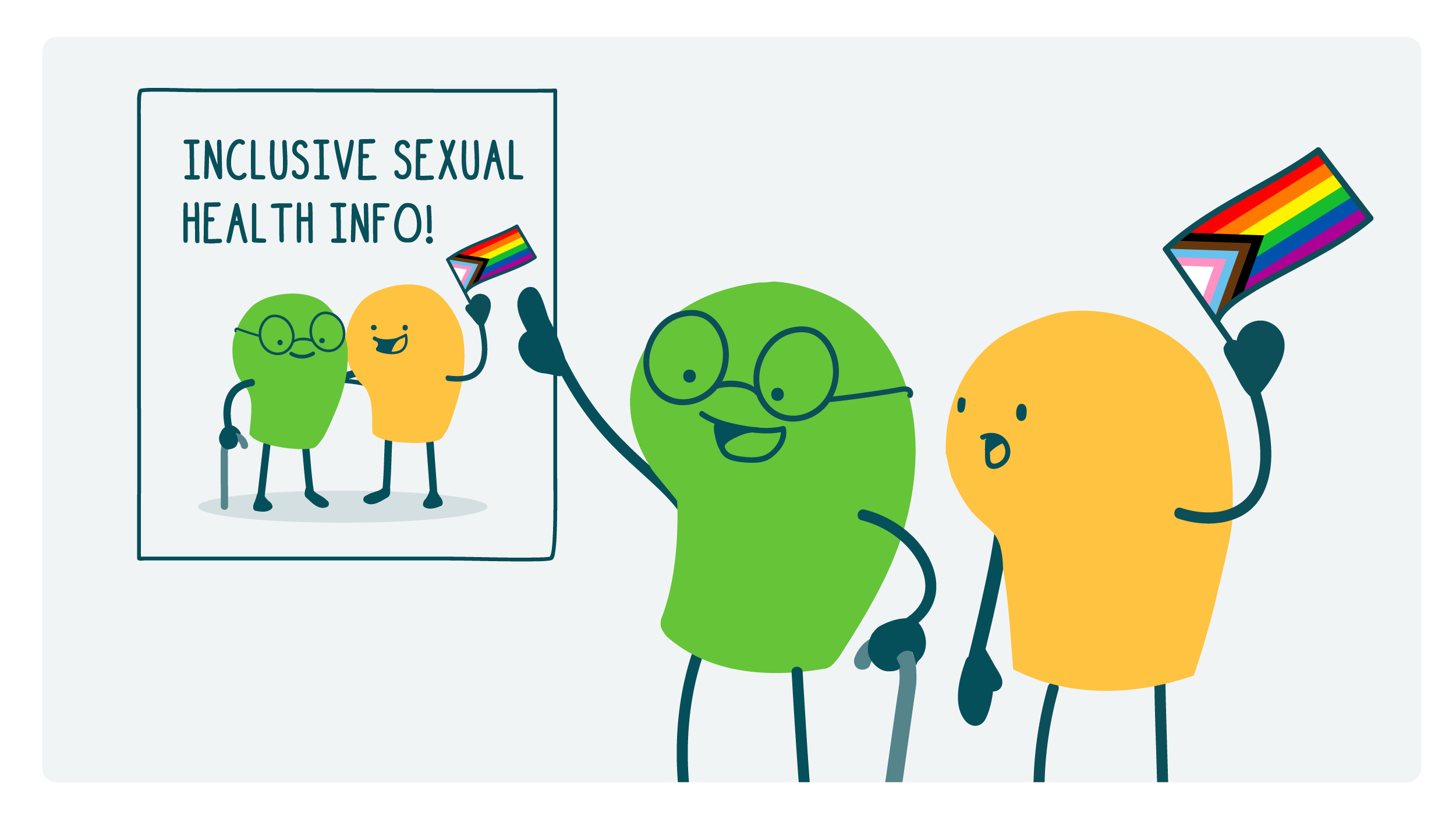
Last month, we shared some ways to make sexual health content more inclusive and accessible. And today we’re following up with a few more tips to help you create inclusive sexual health resources. Let’s jump in!
Use gender-conscious language. This is our general recommendation for addressing gender in health comm. It means being thoughtful about using gendered language when gender is important — and using gender-neutral language when it’s not. (Other terms for this are gender-aware, gender-sensitive, and gender-inclusive language.) In sexual health comm, you tend to see a lot of gendered terms like “women’s health” and “male condom.” But those common phrases can leave transgender, nonbinary, and intersex people out of the conversation.
Opting for gender-neutral language in these cases can certainly make your materials more inclusive — and, as a bonus, it often helps streamline your content! Check out these simple swaps:
- “Your partner” instead of “your boyfriend or girlfriend”
- “They” instead of “he or she”
Of course, there are times when gender-conscious language takes a little extra time or space. For example, “if your partner has a penis” is more inclusive (and specific!) than “if your partner is male.” But it’s well worth the effort to show LGBTQ+ readers that you’re thinking about their needs and experiences.
Bring disability into the sexual health conversation. While we’re (slowly) starting to see more authentic disability representation in the media, harmful stereotypes linger — like the assumption that people with disabilities can’t or don’t have sex. In reality, of course, many people with disabilities have and enjoy sex! And disability can shape how people experience sexuality. For example, recent studies show that autistic people are more likely to identify as LGBTQ+. Chronic pain, mobility, and sensory issues can play a role in people’s sex lives, too. These factors can also make routine sexual health care like pelvic exams more challenging, especially if doctors don’t know how to accommodate their patients’ needs.
It’s important to recognize that people with disabilities are less likely to receive sexual education and face a higher risk of sexual assault. Because of ableism in our society, some people with disabilities may get the message that their comfort, their boundaries — and ultimately, their consent — don’t matter. As health communicators, we’ve got an opportunity to challenge these harmful messages and make readers with disabilities feel seen in our sexual health resources.
We know this is a lot to think about when writing, say, a single fact sheet. So here’s a simple but meaningful first step: Include images of people who use mobility aids (like wheelchairs or canes) and assistive devices (like prosthetics, ostomy bags, or hearing aids) in your materials. Then consider how you can include diverse perspectives and experiences of disability in your content. Which leads us to…
Talk to your audience! Yep, you knew it was coming, dear readers: When you’re creating sexual health resources, include your audience in the process. Ask them what they need to know about sexual health and what they like or dislike about existing resources. Take time to learn about their experiences with sexual health and sexuality. Getting input from your audience is always a good idea, even if there’s not much room in your budget.
The bottom line: As health communicators, we have an opportunity to create sexual health resources that help readers feel seen and valued.
Browse recent posts